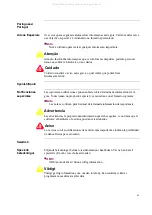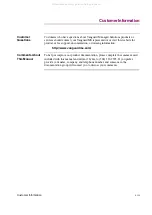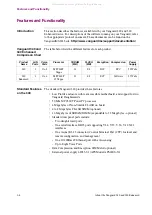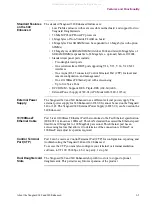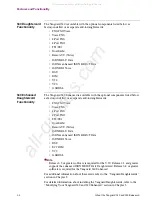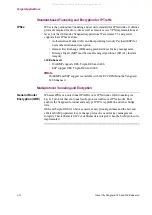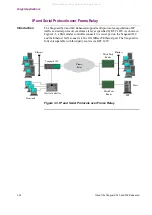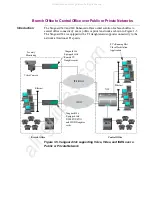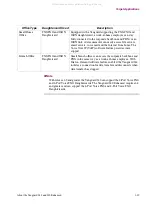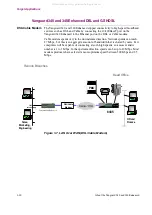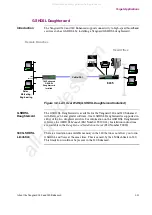
About the Vanguard 340 and 340 Enhanced
1-9
Target Applications
Virtual Private Network
Introduction
This section provides a general description of features and applications within the
Vanguard Virtual Private Network (VPN).
These topics are discussed:
• Cost-effective VPN Solutions
• Hardware-based Encryption and Compression
• Standard-based Tunneling and Encryption for IP Traffic
• Multi-protocol Tunneling and Encryption
• Frame Relay and X.25 Encryption
For detailed information about a VPN, refer to your
Virtual Private Network Manual
(VPN)
(Part Number T0103-10).
What is a VPN?
A Virtual Private Network (VPN) is a network that has the appearance and many of
the advantages of a dedicated link but occurs over a shared network. Using a
technique called “tunneling,” packets are transmitted across a public routed network,
such as the Internet or other commercially available network, in a private “tunnel”
that simulates a point-to-point connection.
This approach enables network traffic from many sources to travel through separate
tunnels across the same infrastructure. A VPN allows network protocols to traverse
incompatible infrastructures. A VPN also enables traffic from many sources to be
differentiated, so that it can be directed to specific destinations and receive specific
levels of service.
Advantages of a
VPN
A VPN provides following advantages:
• Cost Effectiveness
-
Infrastructure Cost
- By using a VPN, a company need not invest money
on connectivity equipment like leased lines, WAN switches etcetera. The
connectivity is provided by the service provider.
-
Operational Cost
- Costs involved with maintaining leased lines or a
private WAN along with the money spent on people to maintain them can
be avoided.
• Manageability
- A VPN is more easily managed when compared to a fully private network.
Requirements of a
VPN
Below are some of the requirements of a VPN:
• Connectivity
- There needs to be network connectivity among the various corporate sites.
This connectivity is typically used through the Internet.
• Security
- Data exchanged between the various corporate sites is confidential. When
data is sent over a public network it is usually encrypted. The encryption
algorithm must be robust enough to withstand any type of snooping.
All manuals and user guides at all-guides.com
Summary of Contents for 340
Page 10: ...All manuals and user guides at all guides com...
Page 18: ...All manuals and user guides at all guides com...
Page 20: ...All manuals and user guides at all guides com...
Page 106: ...All manuals and user guides at all guides com a l l g u i d e s c o m...
Page 114: ...All manuals and user guides at all guides com...
Page 116: ...All manuals and user guides at all guides com a l l g u i d e s c o m...

